Seasons
In science, seasons are the four periods of the year marked by particular weather patterns and daylight hours. The four seasons are spring, summer, autumn (fall), and winter. These seasons occur due to the tilt of the Earth's axis and its orbit around the sun.
Causes of Seasons
The Earth's axis is tilted at an angle of approximately 23.5 degrees. As the Earth orbits the sun, different parts of the planet receive varying amounts of sunlight, resulting in the changing seasons. When a particular hemisphere is tilted towards the sun, it experiences summer, while the opposite hemisphere experiences winter. As the Earth continues its orbit, the tilt causes the seasons to change.
Effects of Seasons
Each season brings distinct changes in weather, temperature, and daylight hours. For example, summer is characterized by longer daylight hours and warmer temperatures, while winter has shorter days and colder temperatures. Spring and autumn have transitional weather patterns.
Study Guide
Here are some key points to remember about seasons:
- The Earth's axis is tilted at an angle of approximately 23.5 degrees.
- Seasons are caused by the tilt of the Earth's axis and its orbit around the sun.
- The four seasons are spring, summer, autumn (fall), and winter.
- Each season brings distinct changes in weather, temperature, and daylight hours.
Understanding the causes and effects of seasons is an important aspect of Earth science. It helps us comprehend the patterns of weather and climate that affect the world around us.
[Seasons] Related Worksheets and Study Guides:
.◂Science Worksheets and Study Guides Second Grade. The sun and earth

 Activity Lesson
Activity Lesson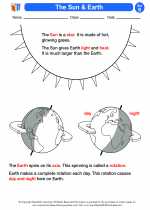
 Worksheet/Answer key
Worksheet/Answer key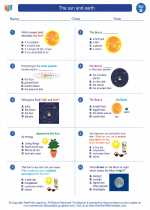
 Worksheet/Answer key
Worksheet/Answer key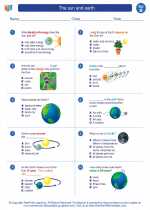
 Worksheet/Answer key
Worksheet/Answer key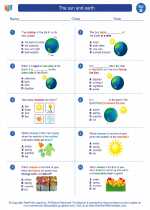
 Worksheet/Answer key
Worksheet/Answer key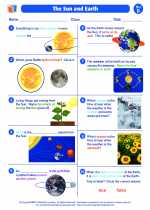
 Vocabulary/Answer key
Vocabulary/Answer key
